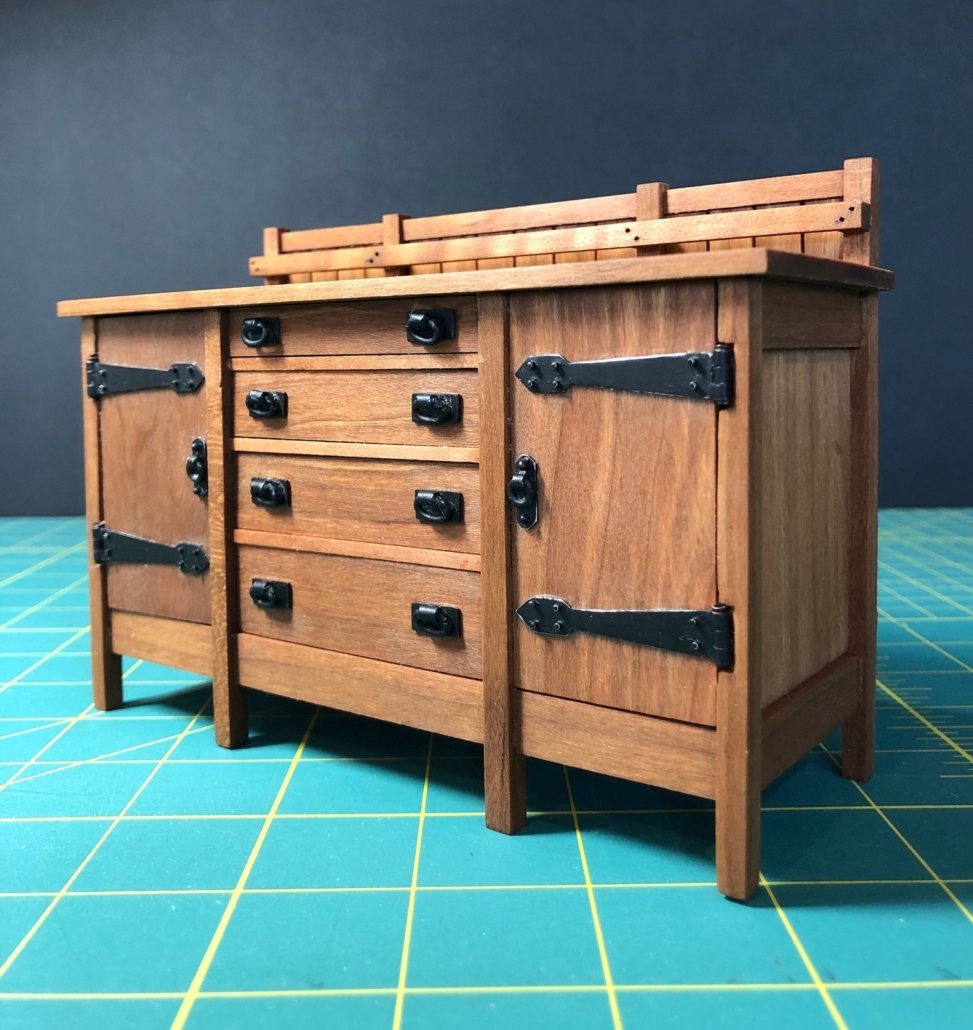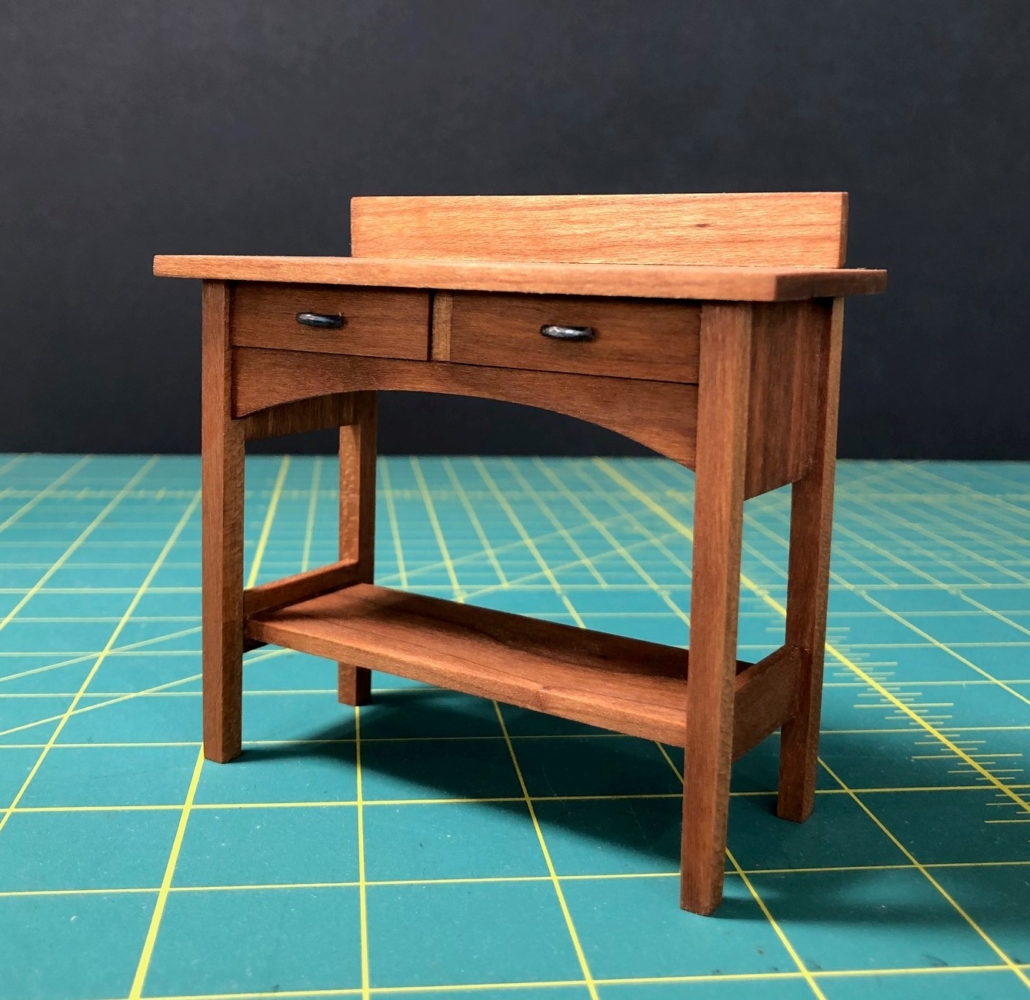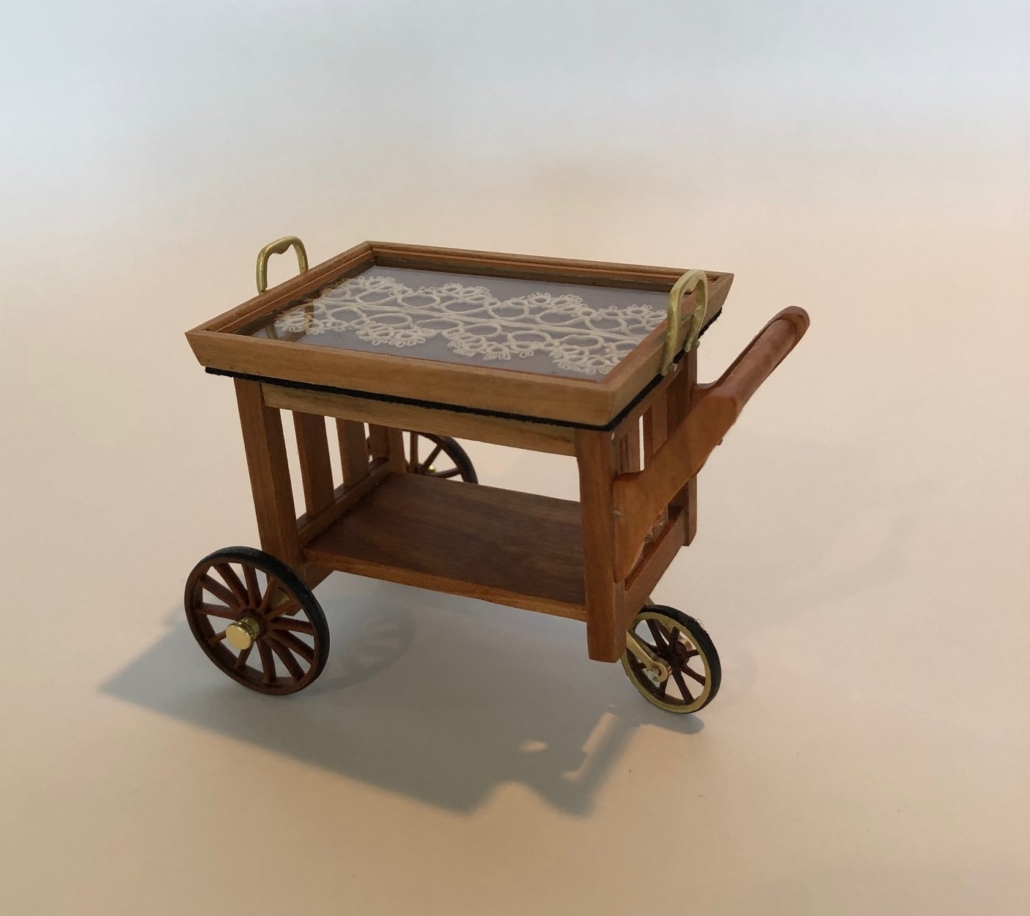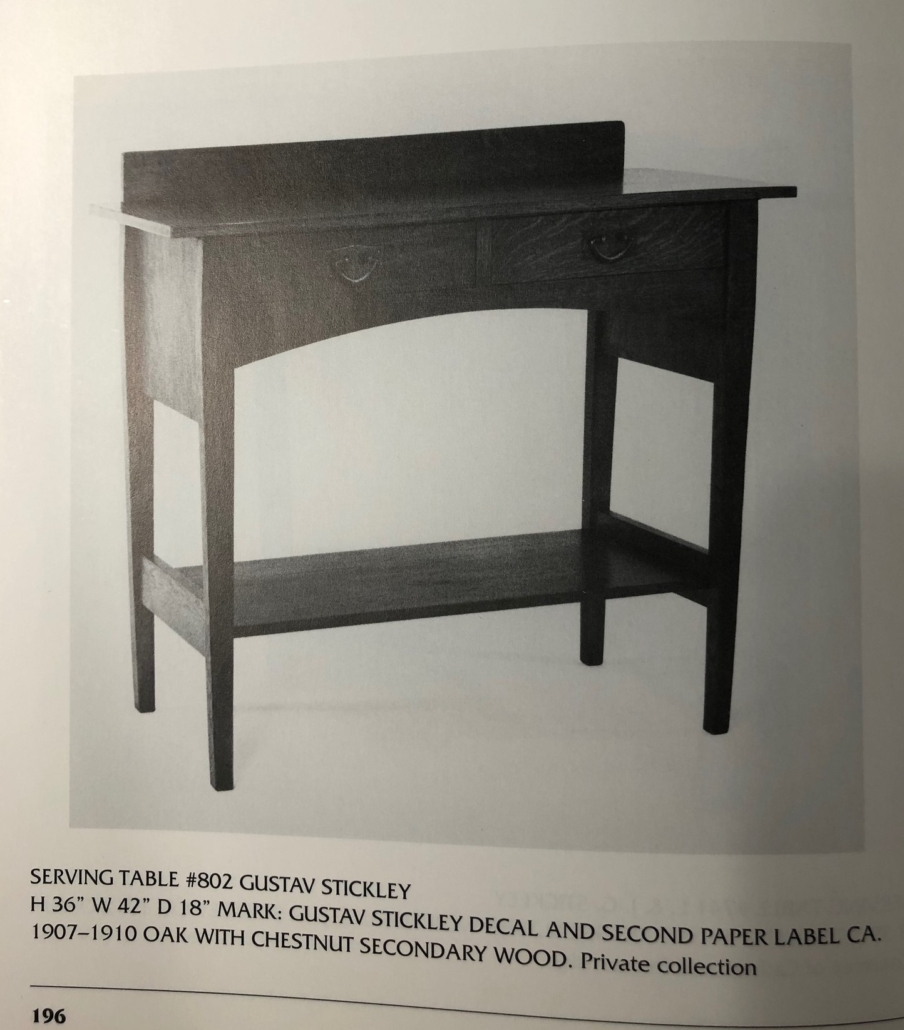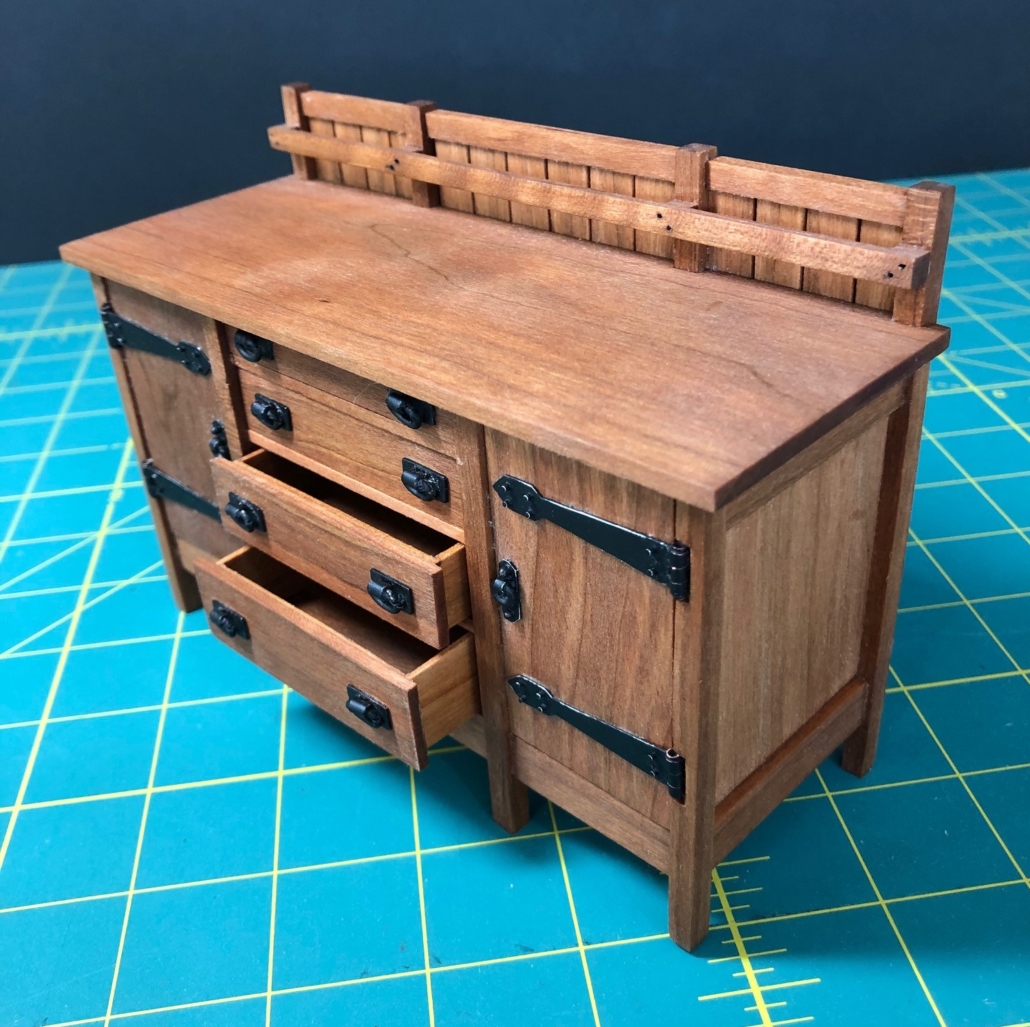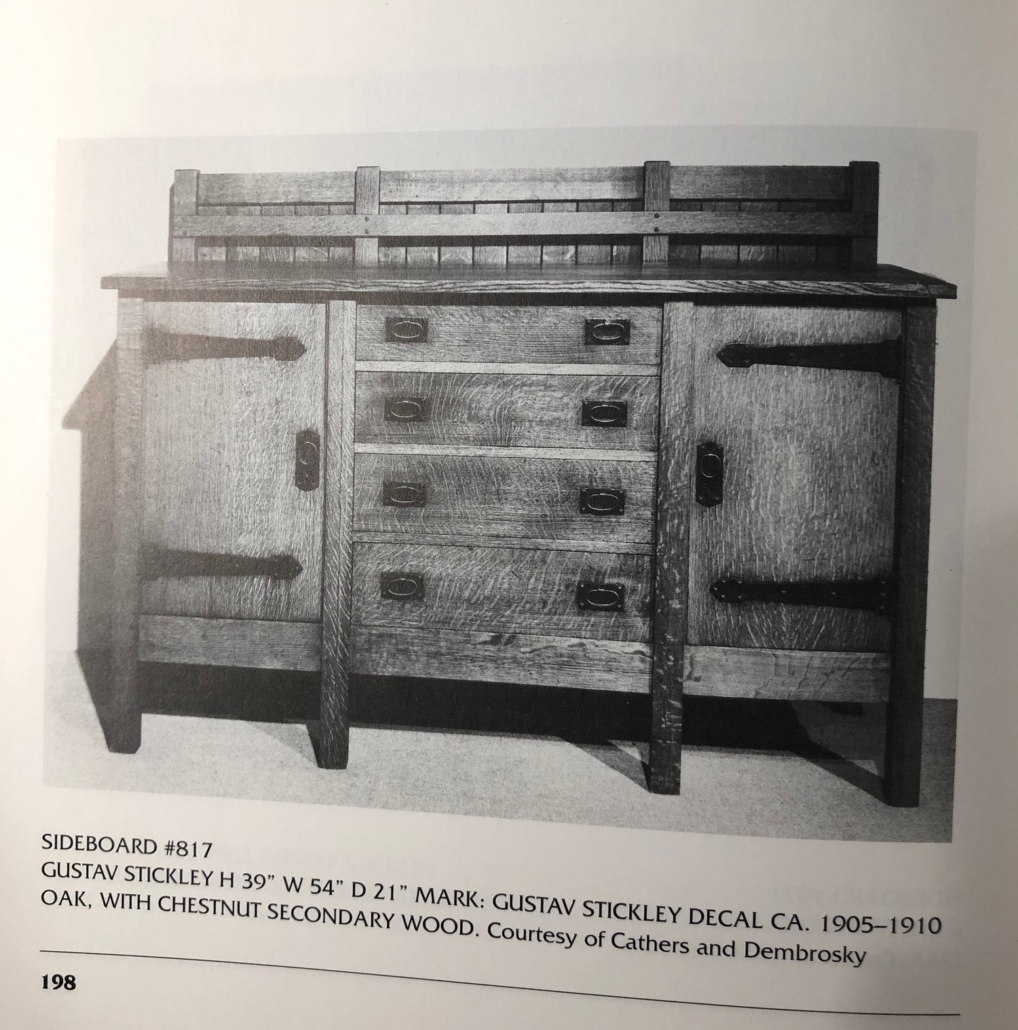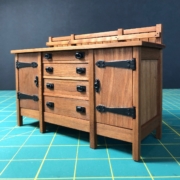New Dining Room Furniture
The transition between the living and dining room in my city house is under construction, both in fact and in my head! I have imagined a colonnade of some kind, a half-partition, to agree with Stickley’s idea that a home should not “be a series of cells, room upon room, shut away from the others”. He even mentions a “great room” concept, not unlike our “open space” preferences today, using as “few entrances and doorways as possible”. Anyhow, as I plan the dining room so it “is enhanced by glimpses of the living room” (per Stickley), I decided to make some dining room furniture for which I finished their scale drawings last year. The tea cart is my own design with a little snippet of my great grandmother’s tatting under the glass on the tray. I’m stalling, maybe, but the living room-dining room transition solution will come to me. Watch this space!
Update: The colonnade design did evolve over a period of months, and I had plenty of time to construct it during a second year of Covid-19. Check it out on “Photo Catch-up” entry posted on January 28, 2022.
